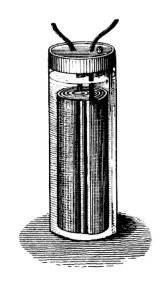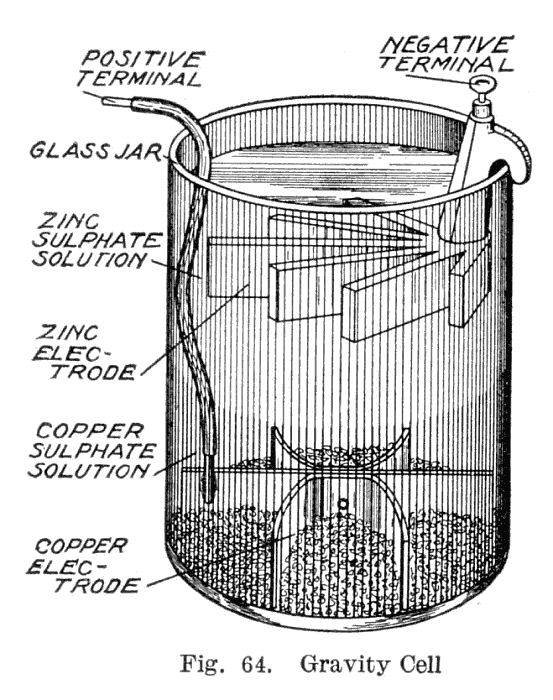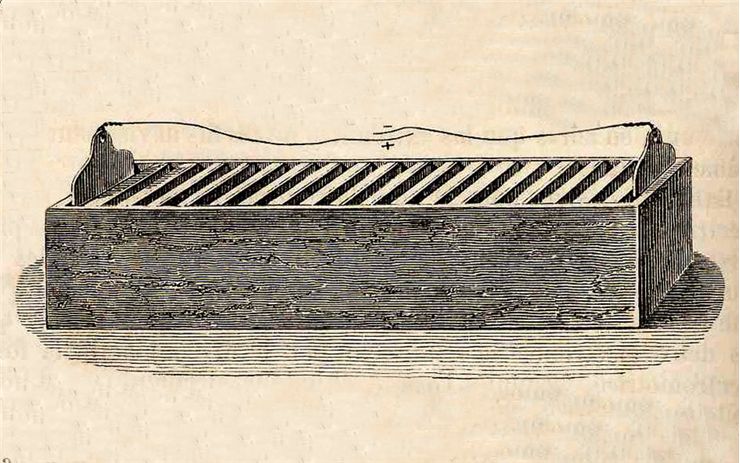History of the Battery
Popularization of batteries, devices that can use stored electrochemical potential to create steady flow of electricity have enabled our modern civilization to live through incredible advancement of technology, medicine, science and way of life. However, even though the history of modern battery reaches back to the past only around 200 years, first interactions of mankind with electricity and simple batteries started much earlier.
Archeological findings dated to around 2000 years ago (some believe they are much older) confirm that civilization in ancient Mesopotamia had ability to create simple batter with small but steady power output. This was done using jars that housed sheet of copper that was rolled around iron rod. Similar pots from that period are also rumored to be manufactured in ancient India, with even written records describing how batteries were made using copper plates, copper sulphate, wet saw dust, zinc powder and mercury. Reasons for creation of these ancient batteries was most likely for use in gold plating, but concrete proof for that was never found.
Modern era of tinkering with electricity started in mid-18th century with numerous experiments from several notable inventors and scientists, most notably Benjamin Franklin who managed to capture electricity in set of linked glass capacitors. He acquired electricity via simple static electricity generator. He named that array “battery”, a term that today survives not to describe Benjamin Franklin’s invention, but a single electrochemical cell that was first invented 50 years after Franklin experimented with static electricity.
Inventor of first true battery cell was Italian physicist Alessandro Volta, (1754 – 1827) who in 1800 identified and published all the necessary ingredients for building chemically powered battery set by observing famous “frog and static electricity” experiment that was created in 1780 by Luigi Galvani. Volta’s invention started an era of very rapid battery experimentation, where new experiments quickly enabled creation of new battery build materials, new form factors, and batter battery features. While Volta’s “Voltaic Pile” was technically sound, it had several disadvantages, mostly loss of the ability to hold charge after a time because of the buildup of hydrogen on metal parts of the battery. This problem was solved in 1836 by British chemist named John Frederic Daniell who created Daniel Cell. His design that demanded 2 separate containers for electrode solution was streamlined one year later by Golding Bird, and in 1837 by John Dancer who created first battery with porous design.
Three other influential battery designs that were created before end of 1860s were “Grove cell” which was used in first years of telegraph network (discontinued because of its leaking of poisonous nitric oxide), “Gravity cell” which was used extensively by telegraph networks all the way to 1950s and “Poggendorff cell” created by German scientist Johann Christian Poggendorff.
In 1859, another important point in the history of battery cells happened. It was then when French physicist Gaston Planté (1834–1889) created world’s first rechargeable battery that was based on lead-acid. His simple design allowed recharging by simply reversing the flow of the current back to the battery. Today his design is still very much in use, with majority of car batteries still being based on lead-acid. Seven years later Georges Leclanché invented a rechargeable battery that was based on zinc, manganese, and ammonium chloride solution, becoming very popular for use in many fields. In the same year of 1886, German inventor Carl Gassner adapted Leclanché’s battery into the first “dry cell” design – rechargeable battery that did not have any liquid electrolyte. This made his battery more rugged, easier to use, more resistant to spilling, and usable in any orientation. This battery remains remembered in history as first battery design that was truly enough user friendly and safe that it found its place into many portable devices, including those used in homes around entire world. At the very end of 19th century, Swedish scientist Waldemar Jungner created first nickel-cadmium battery, which was more commonly known as alkaline battery.
20th century was a time when several more notable battery types were discovered, most notably Nickel-iron batteries, modern alkaline batteries who with the help of Canadian chemical engineer Lewis Urry were in 1959 able to last much longer than original Waldemar Jungner’s batteries, 1970s nickel hydrogen battery, late 1980s nickel–metal hydride batteries, and of course some of the most commonly used batteries for portable devices which are based on lithium. First lithium batteries arrived during 1970s, first lithium ion battery was put to sale by Sony in 1991, and first lithium ion polymer battery arrived in 1997.


